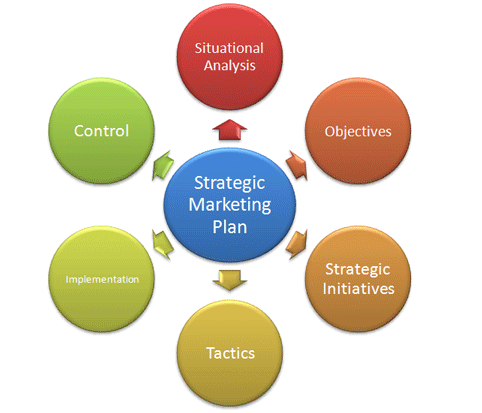Boston Consulting Group (BCG) Matrix is developed by Boston consulting group for the purpose of systematically identifying the main underlying strategic characteristics of specific business segments. It calls for the careful analysis of each product and market segment as a separate business (SBU) so that each SBU can be assigned to a specific strategy or sub-strategy. It is also known as Portfolio Planning Model as it involves the allocation of resources with the total portfolio. Here, each SBU is classified in terms of the SBU’s market share relative to major competitors and the annual growth rate of the industry.

The BCG has identified four following categories of SBU’s and suggested the appropriate strategy for each one.
- Dog: It is an SBU with the competitive disadvantage in a declining industry (low growth). The SBU is unable to attract the substantial number of customers because of intense competition. Dog SBU has cost disadvantage and few growth opportunities. The suggested strategies may be focus, harvesting, profits by cutting services or divestment (to sell).
- Cash Cow: The SBU has the strong competitive advantage but in mature or declining industry (low growth), it usually has the loyal customers. Sales are relatively steady. A cash cow generate more cash than required and the additional cash be used to support other SBU’s. The marketing strategy would be reminder advertising, sales promotion, maintaining distribution channels and encourage repurchases.
- Question Mark/ Wild Cats/ Problem Child: The SBU has little impact on market place with competitive disadvantage in growing industry. There is little customer support for the SBU. The SBU requires the substantial marketing investment to maintain or to increase market share in the face of tough competition. The strategies may be to increase the promotional budget, persuasion of distributors, improving product and reduce prices (if product is homogeneous) or abandon. Here the marketer has to see that whether the SBU can compete in the market or not.
- Star: The SBU in this category is in the most favorable position as far as the competitive advantage and industry growth is concerned. Stars are very potential and can generate substantial cash but require finances to maintain the position. Strategies for increase in market share would be more promotion, greater distribution and direct or indirect price reductions. As the industry matures, the stars become cash cows.
In other words, the choice of strategy of the respective strategic business areas ought to be on the following lines:
- The Star should be cherished and reinforced.
- The Dogs should probably be divested, unless there are strong reasons for keeping them.
- The Cash cows should be made to control (severely) their investments and send excess cash to other SBU’s.
- The Question marks be analyzed to see whether the investment into converting them into stars is worthwhile.
The BCG model is recognized as a useful technique for analyzing a company’s strategic alternatives. It has been widely practiced in USA. The significance of BCG matrix in strategic choice can be understood from two fronts. (A) It is the assignment of a specific mission for each business unit. (B) It is the integration of multiple business units into a total corporate strategy. Learn more about the various essential approaches to marketing planning only at the University Canada West.








